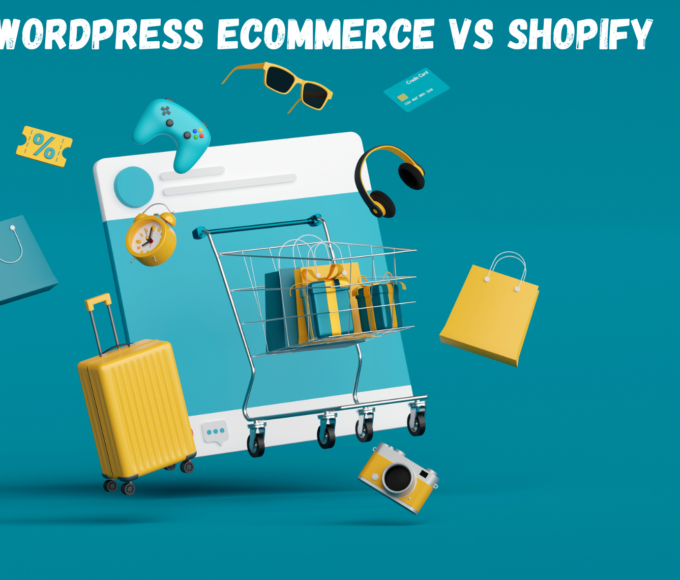Are you looking to take your ecommerce business to the next level? If so, social media marketing is a must. With billions of people using social media every day, it’s the perfect platform to reach your target audience and drive sales. In this article, we’ll cover everything you need to know about social media marketing for ecommerce, including the best platforms to use, how to create engaging content, and how to run social media ads effectively. Without further ado, let’s get started.
Table of Contents
Selecting the Right Platforms

When it comes to social media marketing for ecommerce, selecting the right platforms is key to success. With so many social media platforms available, deciding which ones to use can be overwhelming.
Evaluating Platform Demographics
Understanding the demographics of each social media platform is crucial in determining which platforms to use for your ecommerce business.
Best social media platforms for ecommerce
Here’s a breakdown of the demographics of some of the best social media platforms for ecommerce:
| Platform | Age Range | Gender | Income |
| 25-54 | 56% female, 44% male | $30,000-$74,999 | |
| 18-34 | 57% female, 43% male | $30,000-$74,999 | |
| 18-49 | 77% female, 23% male | $30,000-$74,999 | |
| 18-29 | 42% female, 58% male | $50,000-$74,999 |
Based on these demographics:
If your ecommerce business targets women, Pinterest and Instagram may be the best platforms to use.
If your target audience is older, Facebook may be a good option.
Twitter may be a good platform if your target audience is younger and has a higher income.
Here is a survey that shows how well e-commerce companies in Italy thought their social media investments worked from 2018 to 2020. In 2020, only 35% were happy with the impact, while others found it unsatisfactory or challenging.
Aligning Platforms with Brand Identity
It’s important to align your social media platforms with your brand identity. Consider the tone and style of your brand and choose platforms that align with that. For example, if your brand is fun and playful, Instagram may be a good platform to use. If your brand is more professional, LinkedIn may be a better option.
Additionally, consider the type of content you’ll be sharing on each platform. If your content is mainly visual, Instagram and Pinterest may be the best platforms to use. If your content is more text-based, Twitter and LinkedIn may be better options.
By evaluating platform demographics and aligning platforms with brand identity, you can select the right social media platforms for your ecommerce business. This will help you reach your target audience, create engaging content, and drive sales.
Crafting Engaging Content
Creating engaging content is essential for a successful social media marketing strategy. Engaging content can help you build brand awareness, generate leads, and boost conversions. Let’s discuss how to create engaging social media content.
Understanding Audience Interests
The first step in creating engaging content is understanding your audience’s interests. You can use social media analytics tools to gain insights into your audience’s demographics, interests, and behaviour. Once you clearly understand your audience, you can create content that resonates with them.
One way to create engaging content is to focus on your audience’s pain points and provide solutions to their problems. For example, if you sell skincare products, you can create content that addresses common skincare concerns such as acne, dry skin, and wrinkles.
Another way to create engaging content is to ask your audience for their opinion or feedback. This can help you understand their preferences and tailor your content to their interests. You can use polls, surveys, and open-ended questions to encourage your audience to engage with your content.
Leveraging Multimedia
Visual content is more engaging than text-only content. You can use multimedia such as images, videos, and infographics to make your content more visually appealing.
It’s important to use high-quality images and videos when creating visual content. You can use stock photos or create your images and videos. You can also use Canva or Adobe Spark tools to create professional-looking graphics and videos.
Another way to make your content more engaging is to use storytelling. You can use stories to showcase your products or services creatively and engagingly. You can also use stories to share behind-the-scenes content and give your audience a glimpse into your brand’s personality.
Advertising on Social Media

Social media advertising is a powerful tool for reaching your target audience and driving sales. With the right strategy, you can create ads that are highly targeted, engaging and effective. Let’s cover some of the key aspects on how to run social media ads for your ecommerce business.
Setting Campaign Objectives
Before you start running ads, it is important to define your campaign objectives. This will help you create ads tailored to your specific goals. Some common objectives for ecommerce businesses include:
- Driving traffic to your website
- Increasing brand awareness
- Generating leads
- Boosting sales
Once you have defined your objectives, you can create ads that are designed to achieve these goals. For example, if your objective is to drive traffic to your website, you might create a series of ads that feature a strong call-to-action and a link to your site.
Budgeting and Bidding Strategies
Regarding social media advertising, budgeting and bidding strategies are key. You need to set a budget that is realistic for your business and then bid on ad placements to ensure that your target audience sees your ads.
There are a few different bidding strategies you can use, including:
- Cost per click (CPC): You pay each time someone clicks on your ad
- Cost per impression (CPM): You pay each time your ad is shown to someone
- Cost per action (CPA): You pay each time someone takes a specific action, such as making a purchase on your website
Choosing the right bidding strategy will depend on your campaign objectives and budget. It is important to monitor your ad performance regularly and adjust your bidding strategy as needed.
Conversion Strategies: How to Use Social Media to Drive Sales
One of the main goals of social media marketing for ecommerce is to drive sales and increase conversion rates.
Creating Shoppable Posts
Shoppable posts are a great way to make it easy for your followers to purchase your products directly from your social media pages. By tagging your products in your posts, users can click on the tags and be taken directly to your product pages. This not only makes the purchasing process more convenient for your customers but also increases their chances of purchasing.
To create shoppable posts, you will need to have a business account on the social media platform you are using. You will also need to have a product catalogue set up on your account. Once you have these set up, you can start creating shoppable posts by tagging your products in your posts.
Utilising Influencer Partnerships
Influencer partnerships can be a powerful tool for driving sales and increasing conversions. By partnering with influencers who have a large following and a strong influence over their followers, you can reach a wider audience and increase brand awareness.
When choosing influencers to partner with, choosing ones that align with your brand values and target audience is important. You should also consider their engagement rates and the quality of their content.
Once you have chosen your influencers, you can work with them to create content that promotes your products and encourages their followers to make a purchase.
In an early 2023 survey of UK marketing leaders, 100% confirmed using social media marketing for B2C services, primarily for brand awareness and building. Approximately 95% utilized it for B2C product promotion.
Analytics and Improvement

To ensure the success of your social media marketing strategy, it is important to track your key performance indicators (KPIs). This will help you identify what is working and what isn’t, so you can make informed decisions about how to improve your strategy.
Tracking Key Performance Indicators
There are several KPIs you should track when it comes to social media marketing for ecommerce. These include:
- Engagement rate: This measures how many people interact with your content, such as likes, comments, and shares.
- Click-through rate (CTR): This measures how many people are clicking on links in your posts and ads.
- Conversion rate: This measures how many people are completing a desired action, such as purchasing or signing up for a newsletter.
- Return on investment (ROI): This measures the revenue you generate from your social media marketing efforts compared to the amount of money you spend.
To track these KPIs, you can use social media analytics tools such as Hootsuite Analytics or Google Analytics. These tools provide valuable insights into your social media performance, allowing you to make data-driven decisions about how to improve your strategy.
In a 2020 survey of top European e-commerce leaders, 52% favored influencer marketing for the highest ROI. Surprisingly, 67% predicted that social media advertising would dominate as the most effective channel by 2030.
A/B Testing for Optimisation
One way to improve your social media marketing strategy is through A/B testing. This involves creating two versions of a post or ad and testing them against each other to see which performs better. You can test different elements such as the headline, image, or call-to-action.
To conduct A/B testing, you can use social media advertising platforms such as Facebook Ads or Twitter Ads. These platforms allow you to create multiple versions of an ad and test them against each other to see which one performs better.
By tracking your KPIs and conducting A/B testing, you can continually improve your social media marketing strategy and drive more sales for your ecommerce business.
Frequently Asked Questions
What strategies are most effective for engaging an audience on social media to boost e-commerce sales?
To engage an audience on social media and enhance e-commerce sales, it’s crucial to focus on creating valuable and relevant content. Utilise interactive posts, user-generated content, and behind-the-scenes glimpses to foster engagement. Additionally, leveraging influencer partnerships and hosting interactive Q&A sessions can significantly boost audience engagement.
Which social media platforms yield the highest return on investment for e-commerce advertising?
The choice of social media platform depends on your target audience and the nature of your products. Generally, Facebook and Instagram are effective for e-commerce advertising due to their robust targeting options and visually-driven content. However, platforms such as Pinterest and LinkedIn can also be valuable, depending on your specific e-commerce niche.
How can one create compelling content for social media that drives e-commerce engagement and conversions?
To create compelling content for social media, it’s essential to understand your audience’s preferences and pain points. Incorporate visually appealing images and videos, customer testimonials, and interactive storytelling. Additionally, utilising user-generated content and offering exclusive promotions can drive engagement and conversions.
What are the key considerations when integrating social media advertising into an e-commerce marketing plan?
When integrating social media advertising into an e-commerce marketing plan, it’s important to define clear objectives and target audience segments. Utilise the platforms’ analytics tools to measure performance and refine your strategies accordingly. Additionally, ensure that your advertising aligns with your overall brand messaging and values.
How can e-commerce businesses measure the success of their social media marketing efforts?
Measuring the success of social media marketing efforts involves tracking key performance indicators (KPIs) such as conversion rates, click-through rates, and engagement metrics. Utilise social media analytics tools to gain insights into audience behaviour, content performance, and ad effectiveness. This data can inform future strategies and optimise marketing efforts.
What role does social media play in the customer journey from discovery to purchase in e-commerce?
Social media plays a pivotal role in the customer journey by influencing discovery, consideration, and conversion stages. It serves as a platform for brand discovery, product research, and customer engagement. By fostering a strong social media presence, e-commerce businesses can effectively guide potential customers through the purchasing process and nurture long-term relationships.
















